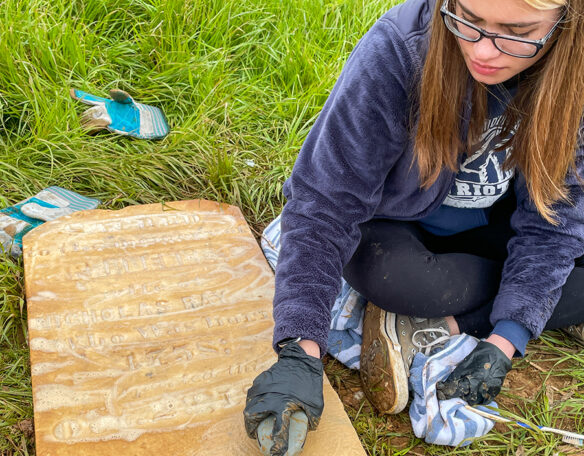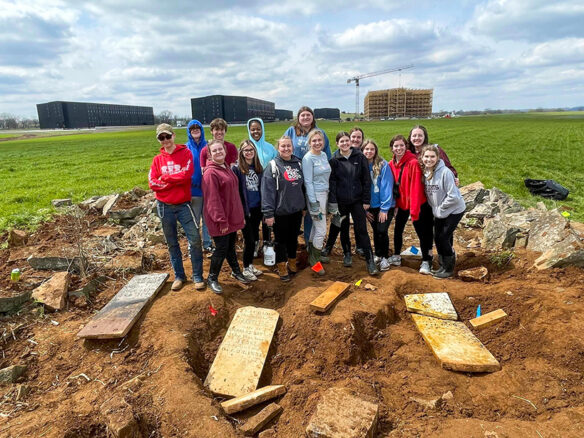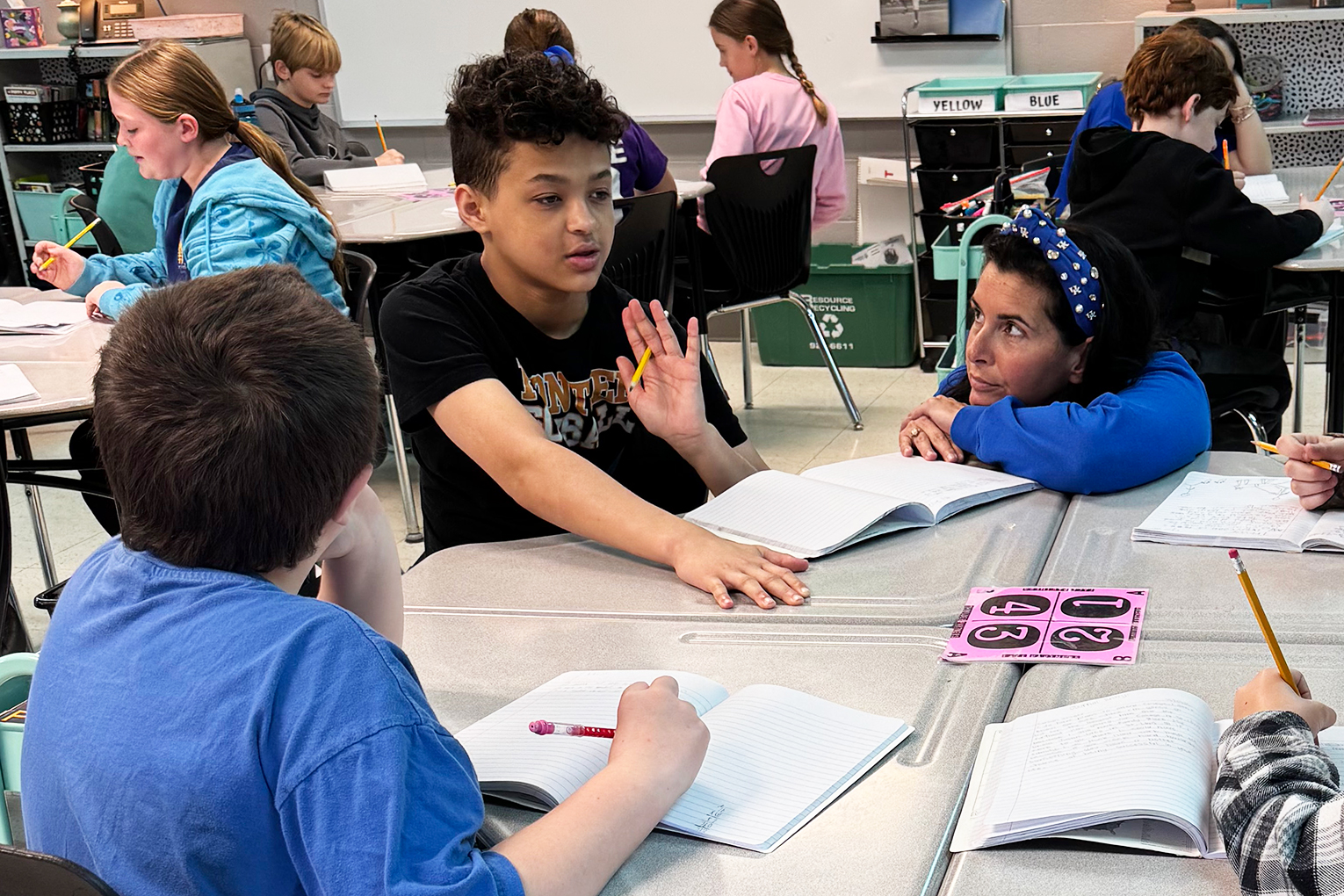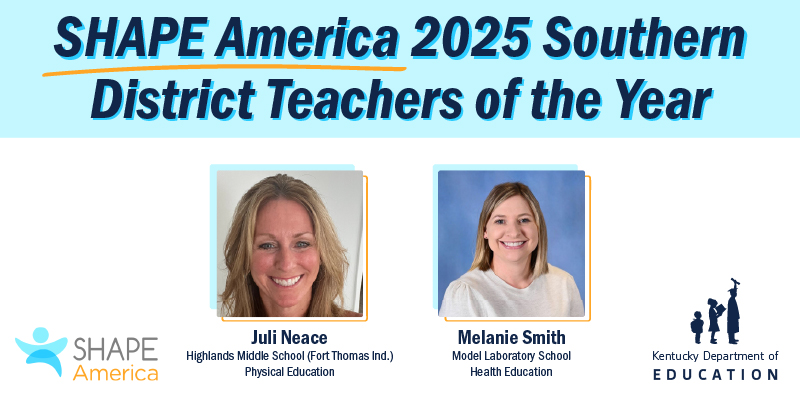
Haley Allen, Emily Mattingly and Eli Mattingly, a group of students in the Young Historians Club at Marion County High School, work to pull a headstone up from the ground as a part of the Ray Cemetery restoration.
Photo submitted by Jamie Brown.
Working in a cemetery might not seem like the ideal way to spend a Saturday. Despite the eerie surroundings of their work, Marion County senior Paige Masterson was excited. They had found the oldest grave known in Marion County, dating back to 1796.
“This cemetery was definitely a fixer-upper, full of weeds and lost headstones,” she said.
Masterson is a part of the Marion County Young Historians Club, a group that works to preserve the past by repairing aged cemeteries. She joined the group because she has always loved ancestral history and learning about the people before her.
“Working in both the cemeteries and burial grounds allows me to be up close and personal to important parts of Marion County’s history,” she said.
The 2023 project for the club was to restore old headstones and map out the neglected Ray’s Cemetery. Uncovered along the way were several footstones and a headstone for Prudence Ray, who died in 1851.

Ashton Mattingly cleans off a headstone recovered at Ray Cemetery. Students collect the names of the recovered headstones and research the families online afterward.
Photo submitted by Jamie Brown.
The Young Historians Club is the brainchild of Jamie Brown, a social studies teacher at Marion County High School, and Karen Caldwell, the Marion County High School attendance clerk and local history enthusiast. Caldwell had been discussing the idea of taking students to cemeteries and the principal had encouraged it.
The first site Brown and Caldwell worked on with students was the Baptist Meeting House in 2019.
“We took five students to the records room and Karen taught us how to do a deep search. We did a few hours of research and processed the deed all the way back to when it was a part of Washington County [in the 1800’s] instead of Marion County,” said Brown.
David Hibbard, another Marion County High School social studies teacher, joined the group in 2023.
The group has worked on three cemeteries now: the Baptist Meeting House in 2019, the Thomas Burial Grounds in 2022 and Ray’s Cemetery in 2023.

The Marion County High School Young Historians Club spent two days working to recover headstones at Ray Cemetery. Deeper learning is weaved throughout the experience with lessons in physics, math, history and environmental science.
Photo submitted by Jamie Brown.
The Thomas Burial Grounds trip included the discovery of an 11-year-old who died in 1865 whose grave was never marked on any map and the probable location of an old Methodist church that was abandoned prior to the Civil War.
“At every single location, we have been able to find some of those things that through records, we knew should be there, but it wasn’t visible above ground,” said Brown.
This vibrant learning experience enables students to make meaningful connections between their class subjects and real-life situations. Physics principles are applied to calculate fulcrums that assist in access to the tombstones, math and metal detectors are used to pinpoint the locations for digging, geography skills are used to create maps of the areas and historical investigation is performed to locate missing names.
“The problem solving has been amazing,” said Brown. “In addition to the history lessons, there was a lot they were able to accomplish.”’
Mandy Courtwright, a senior at Marion County High School agrees.
“My experience in this club has broadened both my interest in other topics and my perspective,” said Courtwright. “By seeing the past, I am more determined to change that future. I have used my experiences in this club to improve my essays in English and deepen my understanding of important events in history.”
The club also inspires the students to research their own family history.
“I have always wanted to know more about my family history and this allowed me not only to know who they are, but to connect with my parents and grandparents about their family and learn what they remember about them,” said Courtwright.
The community is as thrilled about the projects as the students are. Brown said she shared the project with the Marion County Kentucky History and Genealogy Facebook group and the responses exploded in support and people wanting to know more. The genealogy group also helps them locate future projects.
“It’s been a really cool outreach for the community and people have really enjoyed seeing what we have done,” said Brown.
Masterson feels a sense of nobility in their act of service as their work has helped restore the memory of those who came before.
“I feel responsible to take care of the headstones that might be the only proof some of these people ever lived,” she said.




Leave A Comment